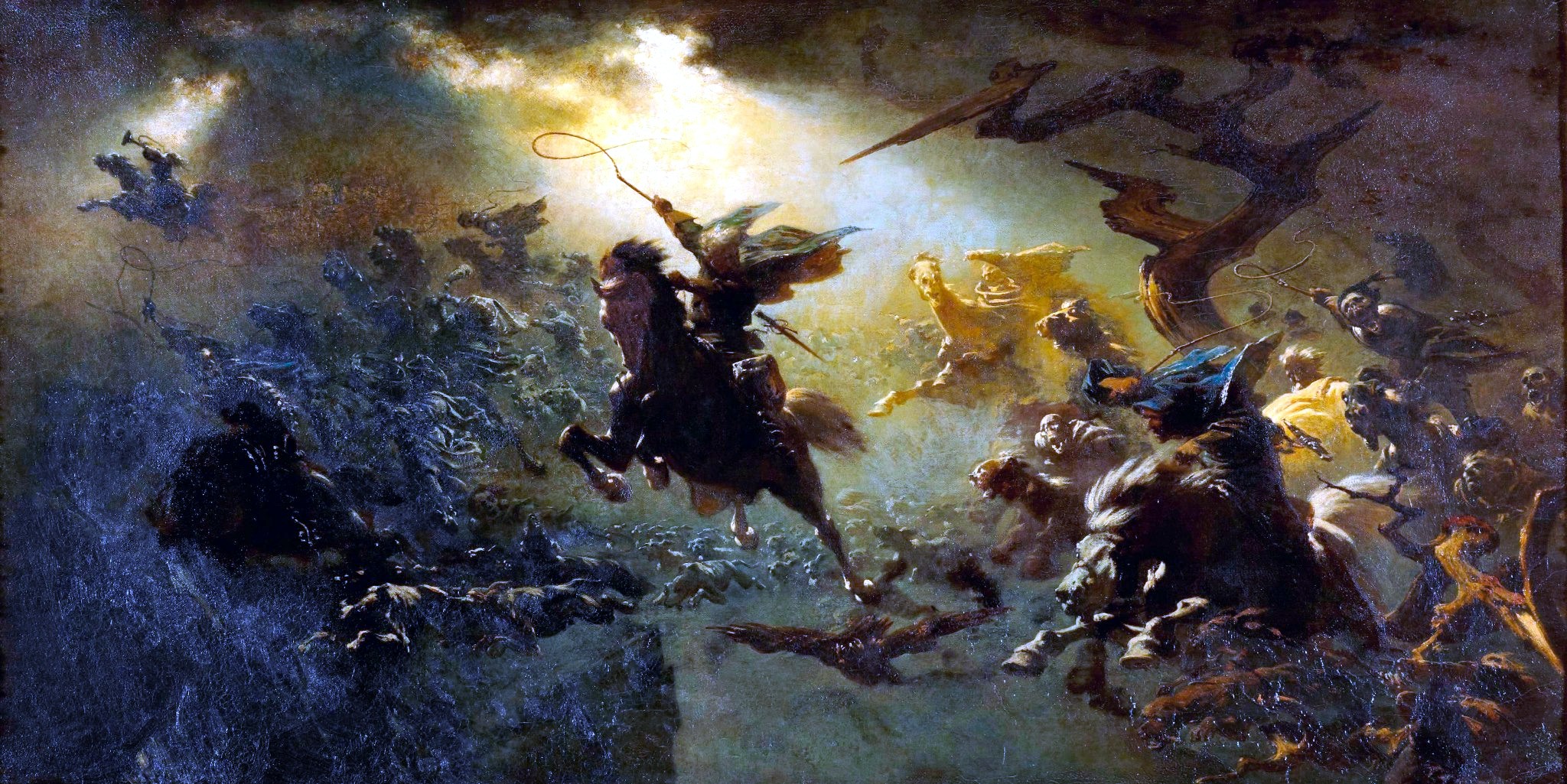Johann Wilhelm Cordes on:
[Wikipedia]
[Google]
[Amazon]
 Johann Wilhelm Cordes (14 March 1824,
Johann Wilhelm Cordes (14 March 1824,
 In 1856, he returned to Lübeck and, three years later, at the request of Grand Duke Carl Alexander, moved to
In 1856, he returned to Lübeck and, three years later, at the request of Grand Duke Carl Alexander, moved to
(Online)
* Alexander Basteck: ''Johann Wilhelm Cordes - Wilde Jagd und weite Landschaft'', Museum Behnhaus, 2013 .
 Johann Wilhelm Cordes (14 March 1824,
Johann Wilhelm Cordes (14 March 1824, Lübeck
Lübeck (; Low German also ), officially the Hanseatic City of Lübeck (german: Hansestadt Lübeck), is a city in Northern Germany. With around 217,000 inhabitants, Lübeck is the second-largest city on the German Baltic coast and in the state ...
- 16 August 1869, Lübeck) was a German landscape painter.
Biography
He came from a family of merchants and had his primary education at theKatharineum
The Katharineum zu Lübeck is a humanistic gymnasium founded 1531 in the Hanseatic city Lübeck, Germany. In 2006 the 475th anniversary of this Latin school was celebrated with several events. The school uses the buildings of a former Francisca ...
. Originally, he was apprenticed to a commercial firm, but soon developed an interest in becoming a painter. He enrolled at the Academy of Fine Arts, Prague
The Academy of Fine Arts, Prague ( cs, Akademie výtvarných umění v Praze; AVU) is an art college in Prague, Czech Republic. Founded in 1799, it is the oldest art college in the country. The school offers twelve master's degree programs and on ...
then, in 1842, transferred to the Kunstakademie, where he studied with Carl Friedrich Lessing and Johann Wilhelm Schirmer
Johann Wilhelm Schirmer (5 September 1807 in Jülich – 11 September 1863 in Karlsruhe) was a German landscape artist born in Jülich, within the Prussian Duchy of Jülich.
Biography
Schirmer was started as a student of historical paint ...
. This was followed by private lessons in Frankfurt with Jakob Becker
Jakob Becker (15 March 1810 – 22 December 1872) was a German artist noted mainly for his genre paintings of peasants.
Biography
He was born in Dittelsheim at Worms, and began his studies with Franz Nikolaus Jung in Worms. When he was 17 yea ...
. In 1848, he was a volunteer in the army of Schleswig-Holstein
Schleswig-Holstein (; da, Slesvig-Holsten; nds, Sleswig-Holsteen; frr, Slaswik-Holstiinj) is the northernmost of the 16 states of Germany, comprising most of the historical duchy of Holstein and the southern part of the former Duchy of Sc ...
and served in the First Schleswig War
The First Schleswig War (german: Schleswig-Holsteinischer Krieg) was a military conflict in southern Denmark and northern Germany rooted in the Schleswig-Holstein Question, contesting the issue of who should control the Duchies of Schleswi ...
.
He specialized in realistic landscapes, painted while travelling. From 1851 to 1854, he made several trips to Scandinavia with Hans Fredrik Gude, a friend from Düsseldorf. He also created coastal scenes with staffage
In painting, staffage () are the human and animal figures depicted in a scene, especially a landscape, that are not the primary subject matter of the work. Typically they are small, and there to add an indication of scale and add interest.
Before ...
.
 In 1856, he returned to Lübeck and, three years later, at the request of Grand Duke Carl Alexander, moved to
In 1856, he returned to Lübeck and, three years later, at the request of Grand Duke Carl Alexander, moved to Weimar
Weimar is a city in the state of Thuringia, Germany. It is located in Central Germany between Erfurt in the west and Jena in the east, approximately southwest of Leipzig, north of Nuremberg and west of Dresden. Together with the neighbouri ...
. This was his most productive period. He was appointed a Professor at the Weimar Saxon Grand Ducal Art School
The Grand-Ducal Saxon Art School, Weimar (German:Großherzoglich-Sächsische Kunstschule Weimar) was founded on 1 October 1860, in Weimar, Germany, by a decree of Charles Alexander, Grand Duke of Saxe-Weimar-Eisenach. It existed until 1910, when i ...
and, in 1862, was awarded the Order of the White Falcon
Order of the White Falcon (german: Hausorden vom Weißen Falken) is a grand-ducal order of Grand Duchy of Saxe-Weimar-Eisenach, founded by Duke Ernest Augustus on 2 August 1732, and renewed in 1815 by Charles Augustus.
Description
In the early 2 ...
.
In 1866, during the Austro-Prussian War, he took part in some military maneuvers and returned ill. He sought recovery at the spa in Travemünde
Travemünde () is a borough of Lübeck, Germany, located at the mouth of the river Trave in Lübeck Bay. It began life as a fortress built by Henry the Lion, Duke of Saxony, in the 12th century to guard the mouth of the Trave, and the Danes ...
, but died in 1869 at a friend's home.''Zweiter Museumsvortrag'', in: ''Lübeckische Blätter'' 43 (1901), S. 629 He never married and had no children, so his estate passed to his brother, Emil, who donated the remaining paintings to the Behnhaus
The Behnhaus is an art museum in the Hanseatic city of Lübeck, Germany, and part of its World Heritage Site.
The Behnhaus as a structure is a neoclassical building with interior design by the Danish architect Joseph Christian Lillie. The museum ...
museum.
Notes
References
* Attribution: *Further reading
* Jenns Eric Howoldt: ''Cordes, Johann Wilhelm''. In: Alken Bruns (Ed.): ''Lübecker Lebensläufe''. Neumunster, 1993 * Susanne Peters-Schildgen: ''Johann Wilhelm Cordes: Ein deutscher Maler des 19. Jahrhunderts''. In: ''Nordelbingen''. Beiträge zur Kunst- und Kulturgeschichte, 1993, pgs.97-130 * Martin Thoemmes: ''Zwischen Wirklichkeit und Magie - Johann Wilhelm Cordes, eine Wiederentdeckung'', in: ''Lübeckische Blätter'' ,201(Online)
* Alexander Basteck: ''Johann Wilhelm Cordes - Wilde Jagd und weite Landschaft'', Museum Behnhaus, 2013 .
External links
{{DEFAULTSORT:Cordes, Johann Wilhelm 1824 births 1869 deaths Artists from Lübeck German landscape painters Düsseldorf school of painting 19th-century German painters 19th-century German male artists German male painters